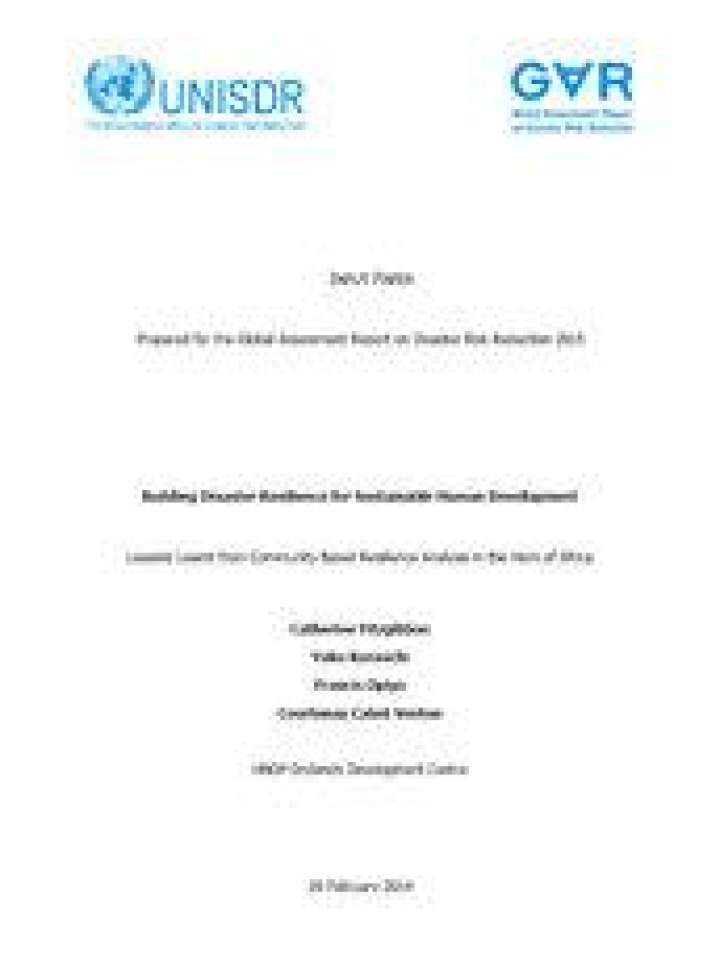Building disaster resilience for sustainable human development: Lessons learnt from community based resilience analysis in the Horn of Africa
The report outlines and analyses the key findings of four Community Based Resilience Analysis (CoBRA) assessments, which were undertaken between June and August 2013 in three counties in Kenya (Marsabit, Turkana and Kajiado) and two districts of Karamoja in Uganda. The CoBRA methodology is one of the first practical analytical tools developed to identify indicators for measuring community resilience as part of the ECHO’s (European Commission Directorate General for Humanitarian Aid and Civil Protection) wider Drought Risk Reduction Action Plan.
The recommendations made in this publication are the following:
- CoBRA results stress the need for future disaster risk reduction strategic frameworks, to promote coordinated and concerted action among various sectors at different scales towards the common disaster resilience building agenda.
- The characteristics identified and prioritized by the communities be used to identify a locally validated list of keystone disaster resilience indicators through which government authorities and other partners monitor progress and impacts of future DRR agenda actions more systematically.
- Ongoing and future DRR framework need to guide national/local policy and planning processes to refocus on activities that build and diversify incomes and assets in the disaster affected/prone communities.
- Future DRR agenda need to put renewed focus on disaster-environment resilience nexus and increase emphasis on raising awareness of natural resource management, particularly the critical role the local ecosystems can play in the face of shocks and stresses.
This document is an input paper of the 2015 Global Report Assessment on Disaster Risk Reduction.
